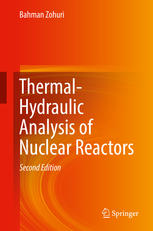

Most ebook files are in PDF format, so you can easily read them using various software such as Foxit Reader or directly on the Google Chrome browser.
Some ebook files are released by publishers in other formats such as .awz, .mobi, .epub, .fb2, etc. You may need to install specific software to read these formats on mobile/PC, such as Calibre.
Please read the tutorial at this link. https://ebooknice.com/page/post?id=faq
We offer FREE conversion to the popular formats you request; however, this may take some time. Therefore, right after payment, please email us, and we will try to provide the service as quickly as possible.
For some exceptional file formats or broken links (if any), please refrain from opening any disputes. Instead, email us first, and we will try to assist within a maximum of 6 hours.
EbookNice Team

Status:
Available4.7
16 reviewsThis revised text covers the fundamentals of thermodynamics required to understand electrical power generation systems and the application of these principles to nuclear reactor power plant systems. The book begins with fundamental definitions of units and dimensions, thermodynamic variables and the Laws of Thermodynamics progressing to sections on specific applications of the Brayton and Rankine cycles for power generation and projected reactor systems design issues. It is not a traditional general thermodynamics text, per se, but a practical thermodynamics volume intended to explain the fundamentals and apply them to the challenges facing actual nuclear power plants systems, where thermal hydraulics comes to play. There have been significant new findings for intercooled systems since the previous edition published and they will be included in this volume. New technology plans for using a Nuclear Air-Brayton as a storage system for a low carbon grid are presented along with updated component sizes and performance criteria for Small Modular Reactors.
Written in a lucid, straight-forward style while retaining scientific rigor, the content is accessible to upper division undergraduate students and aimed at practicing engineers in nuclear power facilities and engineering scientists and technicians in industry, academic research groups, and national laboratories. The book is also a valuable resource for students and faculty in various engineering programs concerned with nuclear reactors.